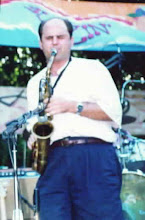
This is an interesting project I did for Nick Marcum.
Nick is interested in sounding like Travis Rainey who when asked, told him he was playing on a Selmer C* that was opened up. Here I will show you the steps I used to open Nicks S-80 from .060 mm to .090 mm.
This is the plain S-80 at .060 tip opening:

First the baffle is reduced and the tip is completely removed. The tip is also reduced and shaped to a reed.

The rails are reduced and the body is sanded:

Clean with steel wool and water. Smooth the new baffle.


Take out the tip again. Shape the baffle. At this point the mouthpiece is starting to show it's personality. The tip gets bigger on the right but the facing needs to get longer on the right. Not to mention the baffle seems a little low on the right. There are a lot of forces working against each other in this mouthpiece. Dealing with these conflicting forces has an impact on how far I decide to open the MPC. I need to keep fighting the forces till the MPC starts doing what I want it to do.

This is the finished mouthpiece.




